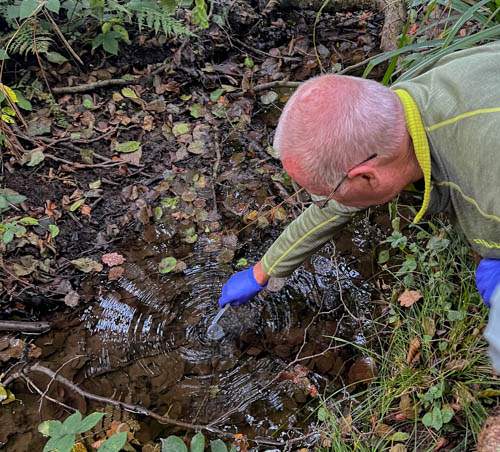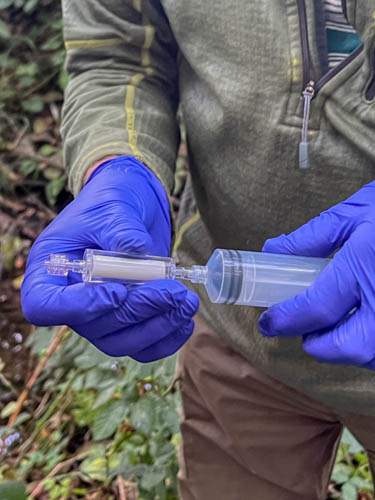9 Oct, 2022
CSI (Crayfish Survey Investigation) team in the forest
The fate and status of the freshwater crayfish in the streams of the Wyre Forest has been the subject of detailed research by members of the WFSG team for several years. Sadly, the populations of the native species of White-clawed Crayfish (Austropotamobios pallipes) have all but disappeared as a result of an outbreak of Crayfish Plague (Aphanomyces astaci) in 2016.
Difficult to survey for by traditional methods, Graham Hill decided to use a more sophisticated and precise method, namely eDNA. With funding provide by the Worcestershire Wildlife Trust, Graham was able to purchase a newly developed eDNA kit to sample and test for the presence of the White-clawed Crayfish.
With an array of test tubes, syringes and sterile gloves, a small CSI (Crayfish Survey Investigation) team set about its work in the forest recently. The process consisted of collecting 20 randomly chosen samples of water from a local stream, being careful not to stir up sediment.
Using a large syringe, measured amounts of the collected water were forced through a small ceramic filter. This process was repeated numerous times, until most of the collected water had been forced through the ceramic filter. Once the process is completed, the filter contains residual amounts of DNA collected from the stream.
Having completed the collection process, the ceramic filter is carefully packed and sent off to the laboratory for analysis. Here the residual DNA strands will be extracted and mapped against the known DNA sequence of (for example) White-clawed crayfish. Graham will also be asking the laboratory to test for the possible presence of a water bound Crayfish Plague, known to infect the carapace of crayfish.
It will take several weeks before the results are known, and the data collected will help in the continuing research into the status of the crayfish populations within the Wyre Forest.
Blog update – 20th Oct 2022
Graham was delighted to report that the results recieved back from the lab detected DNA for White-clawed Crayfish and a negative return for Crayfish Plague. A very encouraging result!
Environmental DNA (eDNA) sampling
for the presence of crayfish.
Passing the sampled water through the ceramic filter to collect residual DNA


